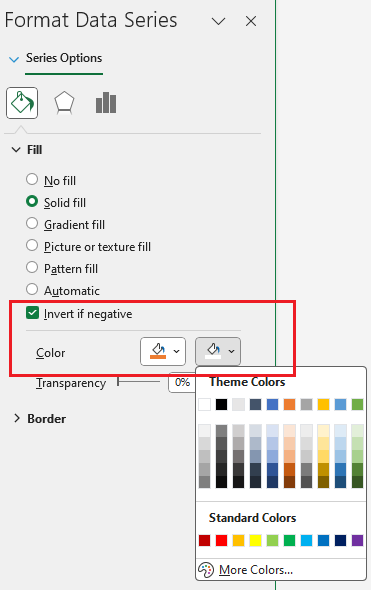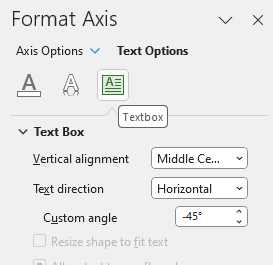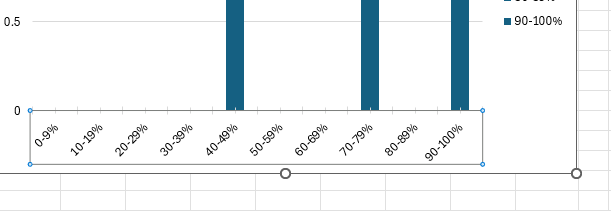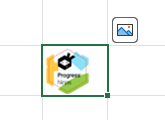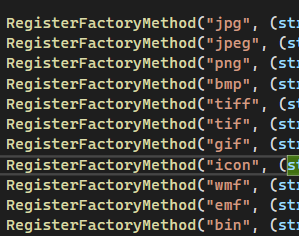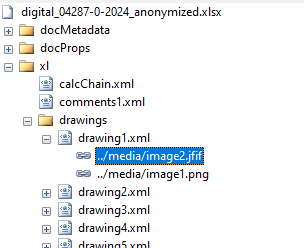Add support for "Invert if negative" property of chart data series fill.
In Excel this can be achieved by right click on the axis, then from the context menu select "Format Axis". Go to the "Text Options" tab and "Text Box" group and then in the "Custom angle" field insert the desired value.
Incorrect calculation of UsedCellRange when conditional formatting is applied to a large cell range.
Workaround:
var usedCellRange = workbook.ActiveWorksheet.GetUsedCellRange(
CellPropertyDefinitions.AllPropertyDefinitions
.Except(
CellPropertyDefinitions.AllPropertyDefinitions.Where(p => p.Name == "DataValidationRule" || p.Name == "ConditionalFormatting")));
It would be beneficial for the clients if every cell has this "cached value" even if the formula can't be evaluated for some reason with the SpreadProcessing - no need for recalculation, just reading the value. It should read the last values while the document was being saved at the originator.
Getting a method like "GetCachedValueString ..." , ideal with the same formatting used for the cell and localization, would be helpful.
string fileName = "file.xlsm";
Telerik.Windows.Documents.Spreadsheet.Model.Workbook workbook;
IWorkbookFormatProvider formatProvider = new Telerik.Windows.Documents.Spreadsheet.FormatProviders.OpenXml.Xlsm.XlsmFormatProvider();
using (Stream input = new FileStream(fileName, FileMode.Open))
{
workbook = formatProvider.Import(input);
}Optimize font fallback mechanism.
Currently, in NET Standard, if no fonts are provided on PDF export, while resolving the fonts the application falls back to different fonts multiple times for each cell which causes a decrease in performance.
Exception "Format string is not in the correct format" is thrown when importing a file with the following format string: "US$"#,##0.0"m";($#,##0.0)
The exception is thrown in the ValidateDateTimeFormatDescriptor method.
With the current implementation, references like in the following expression cannot be evaluated and are treated as strings:
=SUM('C:\Users\Your user name\Desktop\[Workbook_1.xlsx]Sheet1'!A1:B2)
Add support for images embedded in cells.
Similar to clicking "Place in Cell' in MS Excel which embeds the floating image into the cell:
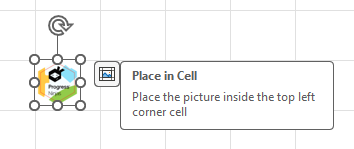
Alternative: Floating Images
A list of the supported functions is available at http://docs.telerik.com/devtools/document-processing/libraries/radspreadprocessing/features/formulas/functions
This function can be implemented as a custom function. Check the following resources for more details on how to achieve that:
- http://docs.telerik.com/devtools/document-processing/libraries/radspreadprocessing/features/formulas/custom-functions
- https://github.com/telerik/xaml-sdk/tree/master/Spreadsheet/CustomFunctions
Currently, these are the supported image formats:
If we try to import an Excel document containing an image with another format, the following error occurs:
System.Collections.Generic.KeyNotFoundException: 'The given key was not present in the dictionary.'

